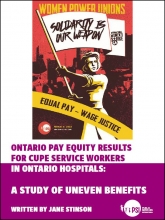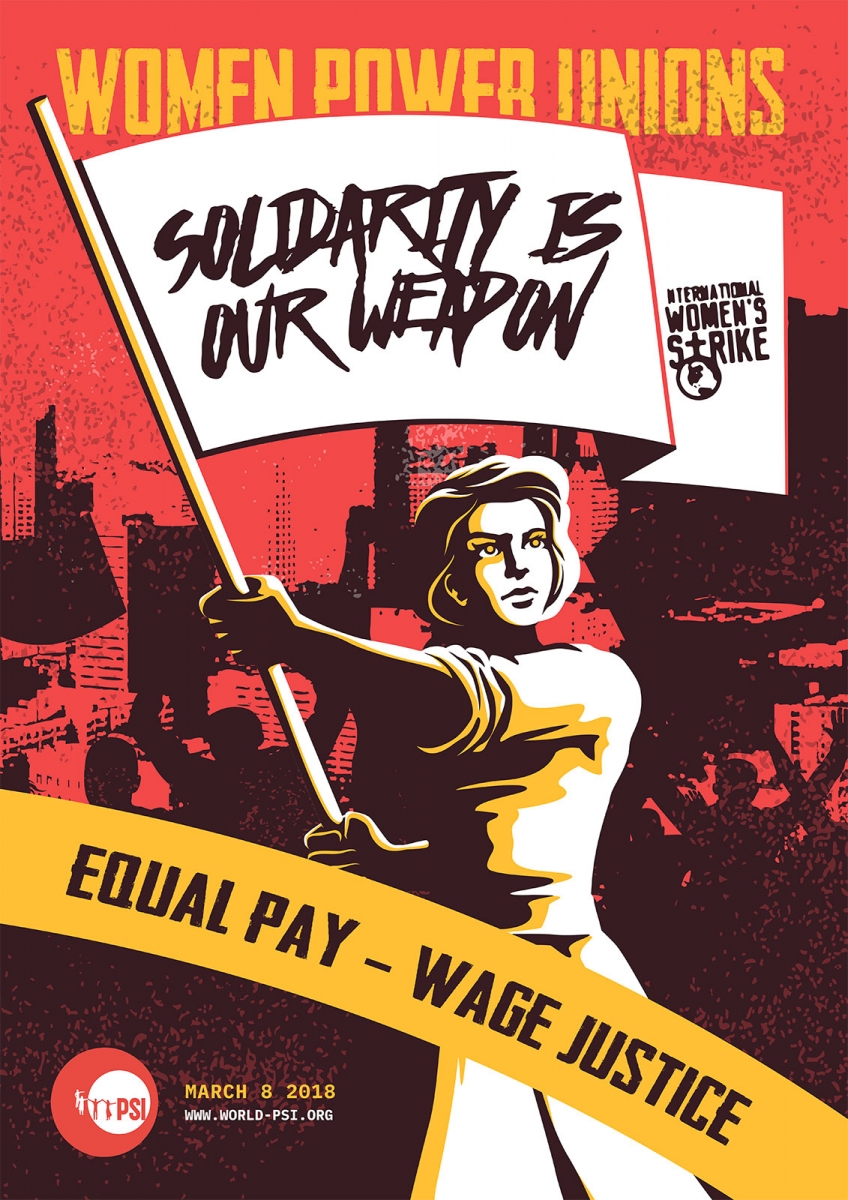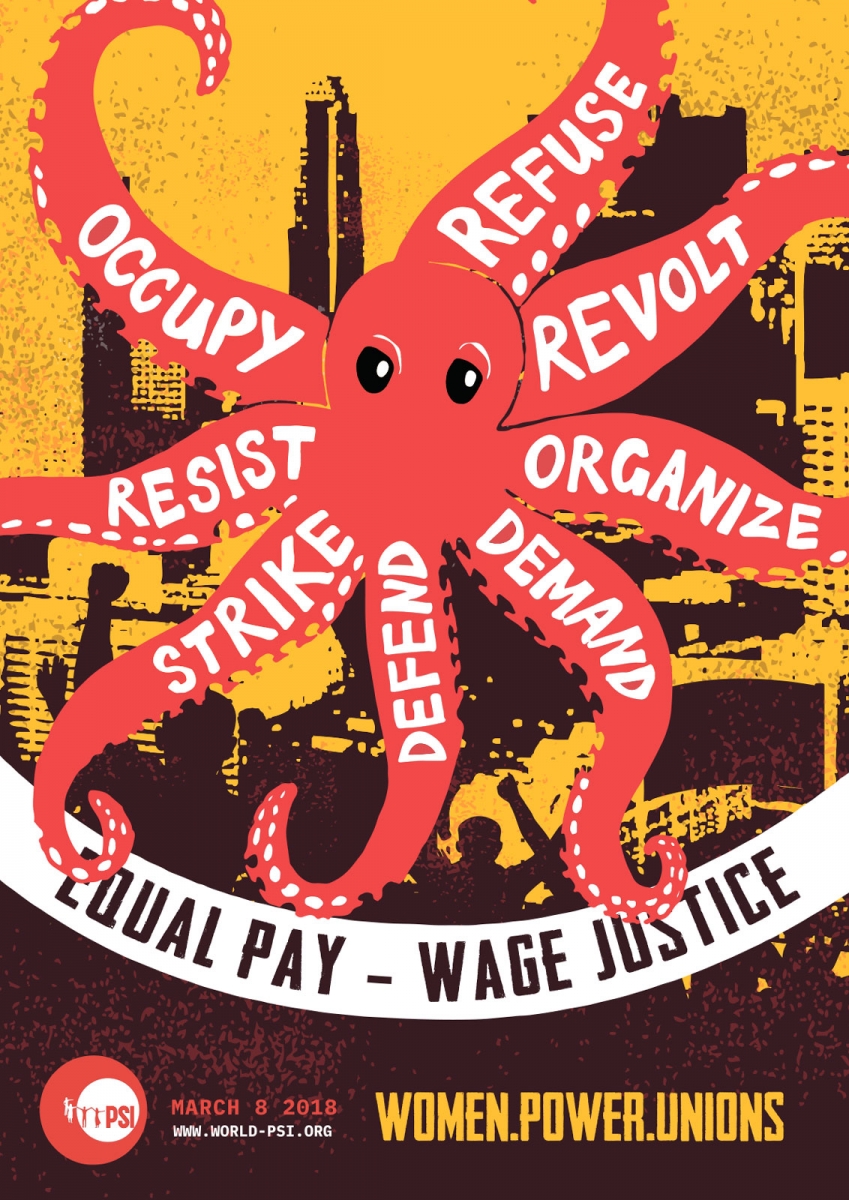Ontario Pay Equity Results for CUPE Service Workers in Ontario Hospitals: A Study of Uneven Benefits

In view of International Women’s Day on 8 March, PSI is reviving a debate about pay equity presented in the study entitled: “Ontario Pay Equity Results for CUPE Service Workers in Ontario Hospitals: A Study of Uneven Benefits” written by Jane Stinson, a Canadian political economist.

Check out PSI's online campaign for International Women's Day
(1st - 10th March 2018)
ONTARIO PAY EQUITY RESULTS FOR CUPE SERVICE WORKERS IN ONTARIO HOSPITALS:
A STUDY OF UNEVEN BENEFITS
In 2018, Jane Stinson summarized for PSI sections of the original study, written two decades ago, and providing key updates that demonstrate that the subject, the theoretical framework, the results and the ways forward proposed by the study remain relevant for current economic debates and gender justices struggles.
 This paper examines the results of the Ontario Pay Equity Act (1987) for unionized female service workers in hospitals represented by the Canadian Union of Public Employees (CUPE) in the province of Ontario, Canada. Fifty-one pay equity plans negotiated in the early 1990s were gathered and analyzed to answer: How were wages and wage relations for female hospital support workers affected by the pay equity legislation? How did it affect the wages of the lowest and highest paid female job classes in the service bargaining units? Did it challenge the wage hierarchy or was it reproduced and legitimized in the process?
This paper examines the results of the Ontario Pay Equity Act (1987) for unionized female service workers in hospitals represented by the Canadian Union of Public Employees (CUPE) in the province of Ontario, Canada. Fifty-one pay equity plans negotiated in the early 1990s were gathered and analyzed to answer: How were wages and wage relations for female hospital support workers affected by the pay equity legislation? How did it affect the wages of the lowest and highest paid female job classes in the service bargaining units? Did it challenge the wage hierarchy or was it reproduced and legitimized in the process?
The Ontario Pay Equity Act was introduced after two years of intense public debate and many years of feminist organizing to get new legislation to close the gender-based wage gap by raising women’s wages. At the time it was considered the strongest pay equity legislation in North America. It was a breakthrough in many respects. It introduced a pro-active approach establishing a timetable by which employers in the public and private sectors were required to complete and post pay equity plans for all employees in the workplace. Where a trade union represented the workers, employers were required to negotiate the pay equity plan with them.
 PSI has a long history of raising consciousness, advocating and putting in place concrete actions to close the gender pay gap in the public sector. Despite mostly incomplete results, we have continued to expose the devaluation of women´s labour, the difference between the social value of labour in general and the social value of the labour that reproduces life, and the specific function that reproductive work plays in gender subordination, invisible to the economy, but fundamental for its sustenance.
PSI has a long history of raising consciousness, advocating and putting in place concrete actions to close the gender pay gap in the public sector. Despite mostly incomplete results, we have continued to expose the devaluation of women´s labour, the difference between the social value of labour in general and the social value of the labour that reproduces life, and the specific function that reproductive work plays in gender subordination, invisible to the economy, but fundamental for its sustenance.
In many countries, public employment deeply reflects the horizontal and vertical segregation of women workers. Sectors and occupations in public services that are linked to production are better paid than those linked to care services. Most women stay at the bottom of the labour pyramid and are concentrated in occupations that deal with care and reproduction of life.
Stinson's contribution for a new intersectional approach on pay equity and its transformative proposal demands wage justice and wage solidarity to build the base for a real social equality.
]ane Stinson's biography
 ]ane Stinson worked at the national office of the Canadian Union of Public Employees for 30 years (1979-2009) as a researcher, member educator, facilitator, director and staff trainer, strategic planner, and more. She held senior staff positions as Research & Job Evaluation Director, Managing Director of National Services and Managing Director of Union Development.
]ane Stinson worked at the national office of the Canadian Union of Public Employees for 30 years (1979-2009) as a researcher, member educator, facilitator, director and staff trainer, strategic planner, and more. She held senior staff positions as Research & Job Evaluation Director, Managing Director of National Services and Managing Director of Union Development.
Equality for women in all their diversity has been a key theme of Jane’s work. She did ground-breaking research on pay equity and privatization examining how Ontario pay equity legislation affected CUPE hospital workers and she documented the drastic impacts of contracting out health care services on women’s lives.
In recent years Jane has been active in the Canadian Research Institute for the Advancement of Women (CRIAW) as co-lead of the Feminist Northern Network involving women in an action research project on resource development, investigating the impacts of Changing Public Services on diverse women as workers and users of public services, as CRIAW liaison in rethinking feminist policies for women and in advancing knowledge about intersectionality in theory and practice.

